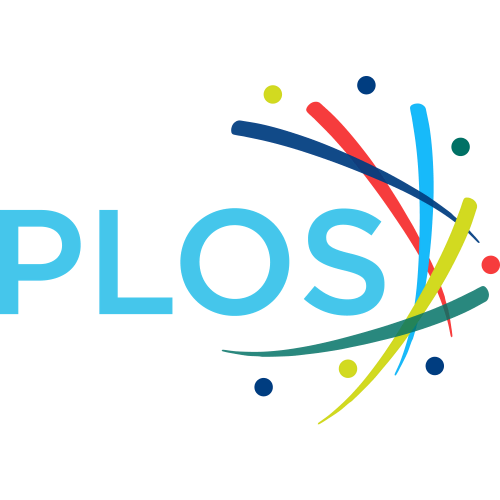ACS Nano, volume 4, issue 9, pages 5487-5497
Quantum Dot Peptide Biosensors for Monitoring Caspase 3 Proteolysis and Calcium Ions
Duane E Prasuhn
1
,
Anne FELTZ
2
,
Juan B Blanco Canosa
3
,
Kimihiro Susumu
4
,
Michael H Stewart
4
,
Bing C Mei
4
,
A V Yakovlev
2
,
Christina Loukou
5
,
Jean-Maurice Mallet
5
,
Martin Oheim
6
,
PHILIP D. DAWSON
3
,
1
Center for Bio/Molecular Science
and Engineering, Code 6900
2
Institut de Biologie, Ecole Normale Supérieure, IBENS, ENS-CNRS UMR 8197, INSERUM U 1024, 46 rue d’Ulm, 75005 Paris, France
|
5
Départment de Chimie, Ecole Normale Supérieure, ENS-CNRS UMR, 8642, 24 rue Lhomond, Paris, F-75005 France
|
Publication type: Journal Article
Publication date: 2010-09-07
General Physics and Astronomy
General Materials Science
General Engineering
Abstract
The nanoscale size and unique optical properties of semiconductor quantum dots (QDs) have made them attractive as central photoluminescent scaffolds for a variety of biosensing platforms. In this report we functionalize QDs with dye-labeled peptides using two different linkage chemistries to yield Förster resonance energy transfer (FRET)-based sensors capable of monitoring either enzymatic activity or ionic presence. The first sensor targets the proteolytic activity of caspase 3, a key downstream effector of apoptosis. This QD conjugate utilized carbodiimide chemistry to covalently link dye-labeled peptide substrates to the terminal carboxyl groups on the QD's surface hydrophilic ligands in a quantitative manner. Caspase 3 cleaved the peptide substrate and disrupted QD donor-dye acceptor FRET providing signal transduction of enzymatic activity and allowing derivation of relevant Michaelis-Menten kinetic descriptors. The second sensor was designed to monitor Ca2+ ions that are ubiquitous in many biological processes. For this sensor, Cu+-catalyzed [3 + 2] azide-alkyne cycloaddition was exploited to attach a recently developed azide-functionalized CalciumRuby-Cl indicator dye to a cognate alkyne group present on the terminus of a modified peptide. The labeled peptide also expressed a polyhistidine sequence, which facilitated its subsequent metal-affinity coordination to the QD surface establishing the final FRET sensing construct. Adding exogenous Ca2+ to the sensor solution increased the dyes fluorescence, altering the donor-acceptor emission ratio and manifested a dissociation constant similar to that of the native dye. These results highlight the potential for combining peptides with QDs using different chemistries to create sensors for monitoring chemical compounds and biological processes.
Top-30
Journals
|
1
2
3
4
5
6
7
|
|
|
Analytical Chemistry
7 publications, 5%
|
|
|
ACS Nano
7 publications, 5%
|
|
|
ACS applied materials & interfaces
5 publications, 3.57%
|
|
|
Nanoscale
5 publications, 3.57%
|
|
|
Analytical and Bioanalytical Chemistry
4 publications, 2.86%
|
|
|
Analytica Chimica Acta
4 publications, 2.86%
|
|
|
Biosensors and Bioelectronics
4 publications, 2.86%
|
|
|
Nano Letters
4 publications, 2.86%
|
|
|
Sensors
3 publications, 2.14%
|
|
|
Journal of Luminescence
3 publications, 2.14%
|
|
|
Journal of the American Chemical Society
3 publications, 2.14%
|
|
|
Chemical Reviews
3 publications, 2.14%
|
|
|
Microchimica Acta
2 publications, 1.43%
|
|
|
Colloids and Surfaces B: Biointerfaces
2 publications, 1.43%
|
|
|
Nano Today
2 publications, 1.43%
|
|
|
Sensors and Actuators, B: Chemical
2 publications, 1.43%
|
|
|
Electrophoresis
2 publications, 1.43%
|
|
|
Langmuir
2 publications, 1.43%
|
|
|
Chemistry of Materials
2 publications, 1.43%
|
|
|
Physical Chemistry Chemical Physics
2 publications, 1.43%
|
|
|
Chemical Science
2 publications, 1.43%
|
|
|
The Analyst
2 publications, 1.43%
|
|
|
Nanomedicine
1 publication, 0.71%
|
|
|
Biophysical Reviews and Letters
1 publication, 0.71%
|
|
|
ECS Journal of Solid State Science and Technology
1 publication, 0.71%
|
|
|
Applied Spectroscopy
1 publication, 0.71%
|
|
|
Materials
1 publication, 0.71%
|
|
|
Frontiers in Chemistry
1 publication, 0.71%
|
|
|
Frontiers in Biology
1 publication, 0.71%
|
|
|
1
2
3
4
5
6
7
|
Publishers
|
5
10
15
20
25
30
35
40
|
|
|
American Chemical Society (ACS)
39 publications, 27.86%
|
|
|
Elsevier
30 publications, 21.43%
|
|
|
Royal Society of Chemistry (RSC)
22 publications, 15.71%
|
|
|
Wiley
17 publications, 12.14%
|
|
|
Springer Nature
11 publications, 7.86%
|
|
|
MDPI
4 publications, 2.86%
|
|
|
Pleiades Publishing
2 publications, 1.43%
|
|
|
Taylor & Francis
1 publication, 0.71%
|
|
|
World Scientific
1 publication, 0.71%
|
|
|
The Electrochemical Society
1 publication, 0.71%
|
|
|
SAGE
1 publication, 0.71%
|
|
|
Frontiers Media S.A.
1 publication, 0.71%
|
|
|
Higher Education Press
1 publication, 0.71%
|
|
|
IOP Publishing
1 publication, 0.71%
|
|
|
Maad Rayan Publishing Company
1 publication, 0.71%
|
|
|
Public Library of Science (PLoS)
1 publication, 0.71%
|
|
|
Institute of Electrical and Electronics Engineers (IEEE)
1 publication, 0.71%
|
|
|
Cambridge University Press
1 publication, 0.71%
|
|
|
Autonomous Non-profit Organization Editorial Board of the journal Uspekhi Khimii
1 publication, 0.71%
|
|
|
5
10
15
20
25
30
35
40
|
- We do not take into account publications without a DOI.
- Statistics recalculated only for publications connected to researchers, organizations and labs registered on the platform.
- Statistics recalculated weekly.
Are you a researcher?
Create a profile to get free access to personal recommendations for colleagues and new articles.
Metrics
Cite this
GOST |
RIS |
BibTex |
MLA
Cite this
GOST
Copy
Prasuhn D. E. et al. Quantum Dot Peptide Biosensors for Monitoring Caspase 3 Proteolysis and Calcium Ions // ACS Nano. 2010. Vol. 4. No. 9. pp. 5487-5497.
GOST all authors (up to 50)
Copy
Prasuhn D. E., FELTZ A., Blanco Canosa J. B., Susumu K., Stewart M. H., Mei B. C., Yakovlev A. V., Loukou C., Mallet J., Oheim M., DAWSON P. D., Medintz I. L. Quantum Dot Peptide Biosensors for Monitoring Caspase 3 Proteolysis and Calcium Ions // ACS Nano. 2010. Vol. 4. No. 9. pp. 5487-5497.
Cite this
RIS
Copy
TY - JOUR
DO - 10.1021/nn1016132
UR - https://doi.org/10.1021/nn1016132
TI - Quantum Dot Peptide Biosensors for Monitoring Caspase 3 Proteolysis and Calcium Ions
T2 - ACS Nano
AU - Prasuhn, Duane E
AU - FELTZ, Anne
AU - Blanco Canosa, Juan B
AU - Susumu, Kimihiro
AU - Stewart, Michael H
AU - Mei, Bing C
AU - Yakovlev, A V
AU - Loukou, Christina
AU - Mallet, Jean-Maurice
AU - Oheim, Martin
AU - DAWSON, PHILIP D.
AU - Medintz, Igor L
PY - 2010
DA - 2010/09/07
PB - American Chemical Society (ACS)
SP - 5487-5497
IS - 9
VL - 4
SN - 1936-0851
SN - 1936-086X
ER -
Cite this
BibTex (up to 50 authors)
Copy
@article{2010_Prasuhn,
author = {Duane E Prasuhn and Anne FELTZ and Juan B Blanco Canosa and Kimihiro Susumu and Michael H Stewart and Bing C Mei and A V Yakovlev and Christina Loukou and Jean-Maurice Mallet and Martin Oheim and PHILIP D. DAWSON and Igor L Medintz},
title = {Quantum Dot Peptide Biosensors for Monitoring Caspase 3 Proteolysis and Calcium Ions},
journal = {ACS Nano},
year = {2010},
volume = {4},
publisher = {American Chemical Society (ACS)},
month = {sep},
url = {https://doi.org/10.1021/nn1016132},
number = {9},
pages = {5487--5497},
doi = {10.1021/nn1016132}
}
Cite this
MLA
Copy
Prasuhn, Duane E., et al. “Quantum Dot Peptide Biosensors for Monitoring Caspase 3 Proteolysis and Calcium Ions.” ACS Nano, vol. 4, no. 9, Sep. 2010, pp. 5487-5497. https://doi.org/10.1021/nn1016132.


















